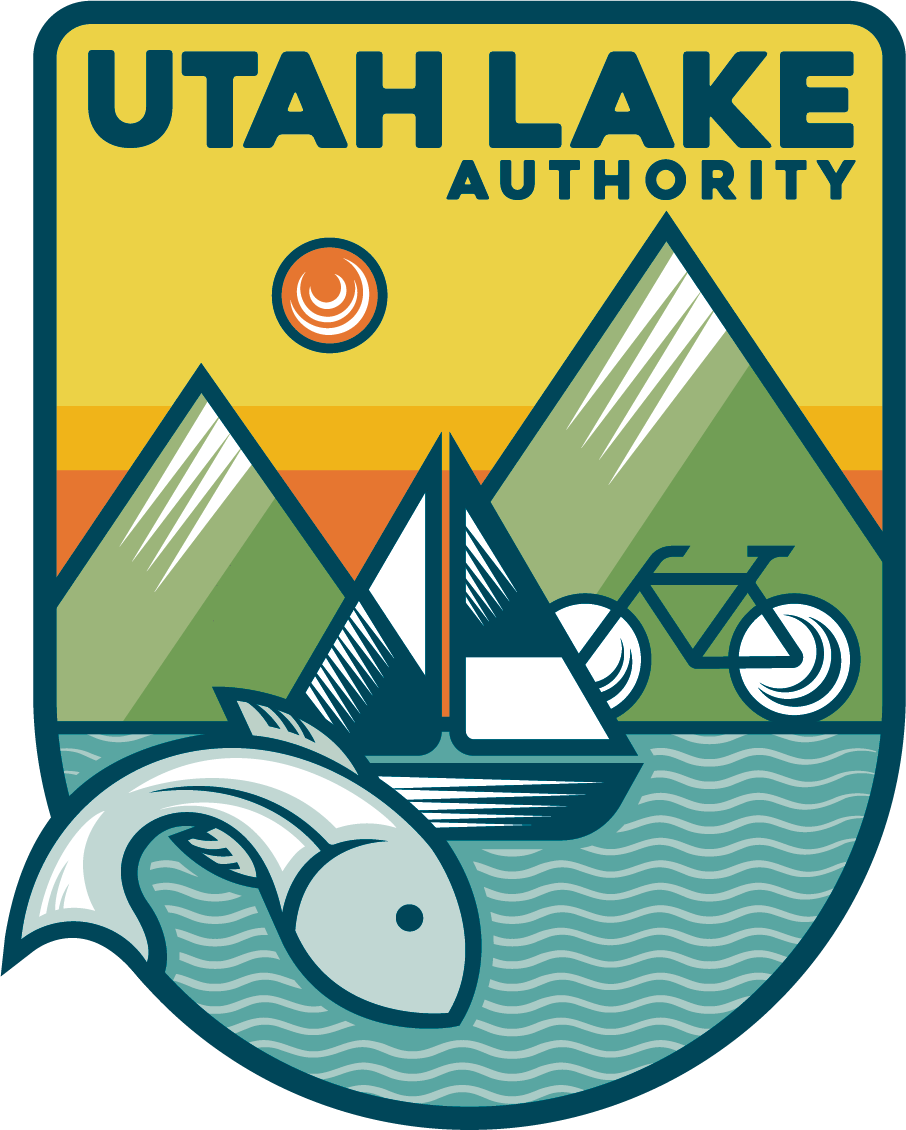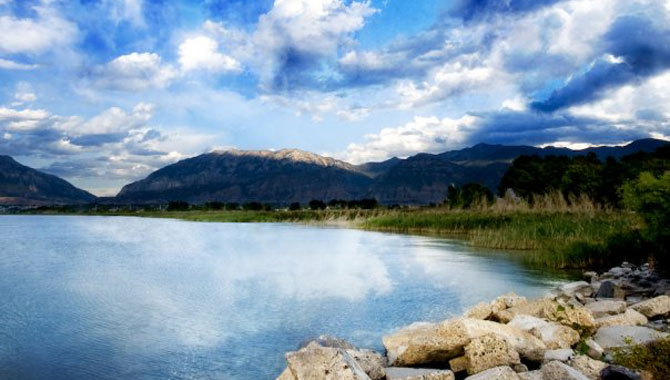You want facts? We got ‘em—some of the more fascinating ones you’ll find:
- The lake is 24 miles long, 12 miles across (over 96,000 acres)
- Third largest fresh water lake west of the Mississippi (slightly smaller than Flathead Lake, Montana and Lake Tahoe, California)
- Average depth is nine feet. Maximum depth is 14 feet
- Water temperature can get as high as 80 degrees, but averages around 73 degrees during the warm summer months
- Almost half (41%) of the water in Utah Lake evaporates each year
- June sucker fish are endangered, native to only Utah Lake, and have a life span of over 40 years
- There were over ten recreational resorts at one time that surrounded Utah Lake
- A showboat used to ferry on Utah Lake, featuring ondeck dancing and a full orchestra
- A boxing match was once staged at the bottom of the lake
- Natural hot springs around the lake can be found on the south end of the lake and in the Saratoga Springs area
- The Jordan River pumping station at Utah Lake was the largest pumping plant at the turn of the 20th century
- Oppositely positioned to the South instead of the North, Utah Lake is patterned after the famous Israeli fresh water lake (Sea of Galilee), in addition to the adjoining Jordan River (name of both locations) and the Great but incredibly salty Salt Lake, which is not unlike the Dead Sea.
- The first European to see Utah Lake was Father Silvestre Vélez de Escalante in 1776.
- Utah Lake is a remnant of a much larger pleistocene lake called Lake Bonneville, which existed from 75,000 to 8,000 years ago
- There are five public boat harbors/marinas: Saratoga Springs City Marina; American Fork City Boat Harbor; Lindon Boat Harbor; Utah Lake State Park; Lincoln Beach Boat Harbor
- Non-native carp make up 75 percent of all fish (but not for long!)
- Other fish species include walleye, white bass, channel catfish, and the endangered June sucker, which has made considerable recovery over the last decade
- Utah Lake has one small island (Bird Island) near the south end of lake
- The lake makes Utah Valley one of the most favorable habitats of the Great Basin


Honestly, where do you come up with these facts. There are several more lakes larger than Utah Lake west of the Mississippi. Even if you throw out man-made lakes like Lake Mead, Lake Powell and a few others, there are still several natural lakes west of the Mississippi larger than Utah Lake. Leech Lake in Minnesota, Devils Lake in North Dakota, Pyramid Lake in Nevada and as I mentioned a few more man-made lakes (Reservoirs). So, please correct the fact that you’re the 3rd largest lake west of the Mississippi.
I see your point, but you’re mistaken about what they are talking about. Utah lake is the third largest freshwater, natural lake.
That view looks really beautiful.
Ray,
It is, isn’t it? There are lots of beautiful views at Utah Lake. Check out the hashtag #beautyofUtahLake on Instagram to see some of our favorites!
What about all the warnings about drinking the water. What about the poisonous algae blooms. What about all the sludge at the bottom. What about the people who can testify of their illness after swimming . Without the dam it would be smaller. What about the huge mosquito clowds at dusk . What about the fact that you can’t irrigate with the water. Livestock get sick from the water.